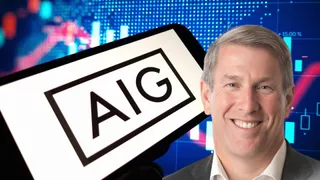US cyber premium reach $2.1bn
US stand-alone and package cyber premiums combined grew by 54 percent year on year to $2.1 billion in 2017 while the direct loss ratio for standalone cyber insurance declined, according to Fitch Ratings.
During the period, stand-alone cyber direct written premiums grew by 7 percent to $986 million, aggregate statutory data for the property/casualty (P&C) industry shows.
Continued high-profile cyber incidents add to the desire for a comprehensive approach to managing network intrusions and data theft from firms of all sizes, Fitch noted. Cyber-specific coverage is often a component of this risk management effort, along with measures to boost network security, loss prevention activity and event response preparation. More stringent cyber regulatory standards across numerous industries, particularly financial institutions, are also spurring cyber protection demand to meet compliance obligations, the report says.
The industry statutory direct loss ratio for standalone cyber insurance fell to 35 percent in 2017 from 43 percent in the prior year. While direct results do not incorporate all claims and underwriting expenses, or the effects of reinsurance, this result is indicative of strong underlying profitability thus far in the cyber market.
Fitch noted that favourable results coupled with expansion of coverage brings with it the risk of capacity entering the market. Often these companies rapidly grow premiums without sufficient underwriting, claims, and product expertise, setting the stage for some carriers to suffer outsized losses from cyber insurance, the agency said.
Most active cyber underwriters by market share of stand-alone and package cyber coverage combined in 2017 were Axis Capital Holdings; Chubb; and American International Group (AIG). AIG remains the largest stand-alone cyber writer.
Profitable results in a new market are attracting competition to the cyber space, Fitch said, noting that 75 distinct insurers wrote over $1 million each of annual cyber premiums in 2017. Information from various market pricing surveys suggest that cyber premium renewal rates remain flat to down, indicating that market underwriting capacity is meeting or exceeding demand.
Growth in package-related cyber premiums reflect expanding insurer efforts to specifically include cyber coverage and endorsements in policies that may hold cyber exposure but which lack explicit policy terms or premiums related to cyber risk. However, some of the growth in 2017 package cyber premiums also reflects variability and changes over time in how companies report cyber premiums in the statutory supplement, Fitch noted.
Make sure you are GDPR compliant and confirm your email address to keep getting our daily emails
More of today's news
Markel, RenRe, Nephila reinsure Boost's insurtech platform
Standard Syndicate taps London Market for head of claims
Third Point Re CEO promises improvement after Q1 loss
Already registered?
Login to your account
If you don't have a login or your access has expired, you will need to purchase a subscription to gain access to this article, including all our online content.
For more information on individual annual subscriptions for full paid access and corporate subscription options please contact us.
To request a FREE 2-week trial subscription, please signup.
NOTE - this can take up to 48hrs to be approved.
For multi-user price options, or to check if your company has an existing subscription that we can add you to for FREE, please email Adrian Tapping at atapping@newtonmedia.co.uk
Editor's picks
Editor's picks
More articles
Copyright © intelligentinsurer.com 2024 | Headless Content Management with Blaze

